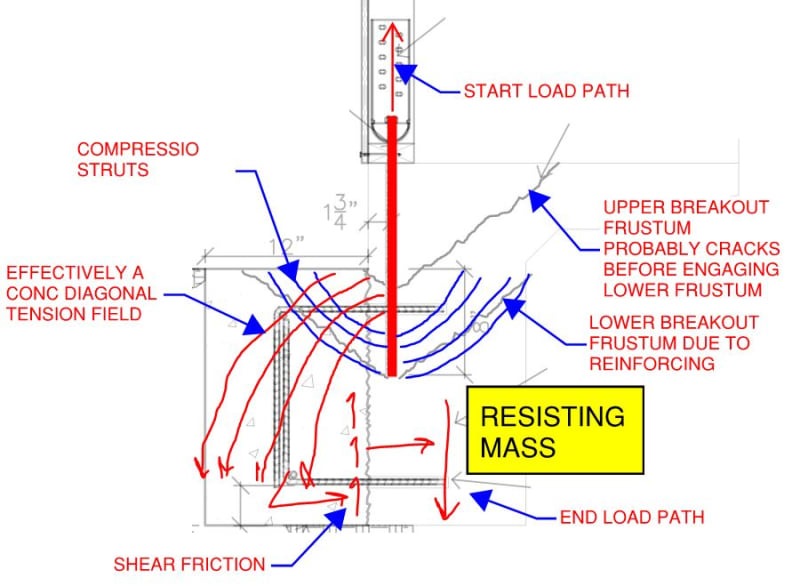shacked
Structural
- Aug 6, 2007
- 169
For residential construction where the seismic or wind uplift loads at the end of shear walls are relatively low I have a detail that I use when the edge distance governs the uplift.
Basically anything above 2.0kips ASD I specify this detail.
See pdf. Basically I add concrete to the side of the existing footing and dowels in order to transfer the uplift force in to the new concrete.
A plan checker is telling me that I can't do this because there is a cold joint too close to the edge and that ACI 318-14 section 17(anchorage to concrete) would treat this as a cold joint and it is un-acceptable.
I do not see an issue with this detail since the calculation already assumes cracked concrete! Is there something that I am missing? How would I persuade him to agree with me?
THanks
Basically anything above 2.0kips ASD I specify this detail.
See pdf. Basically I add concrete to the side of the existing footing and dowels in order to transfer the uplift force in to the new concrete.
A plan checker is telling me that I can't do this because there is a cold joint too close to the edge and that ACI 318-14 section 17(anchorage to concrete) would treat this as a cold joint and it is un-acceptable.
I do not see an issue with this detail since the calculation already assumes cracked concrete! Is there something that I am missing? How would I persuade him to agree with me?
THanks

